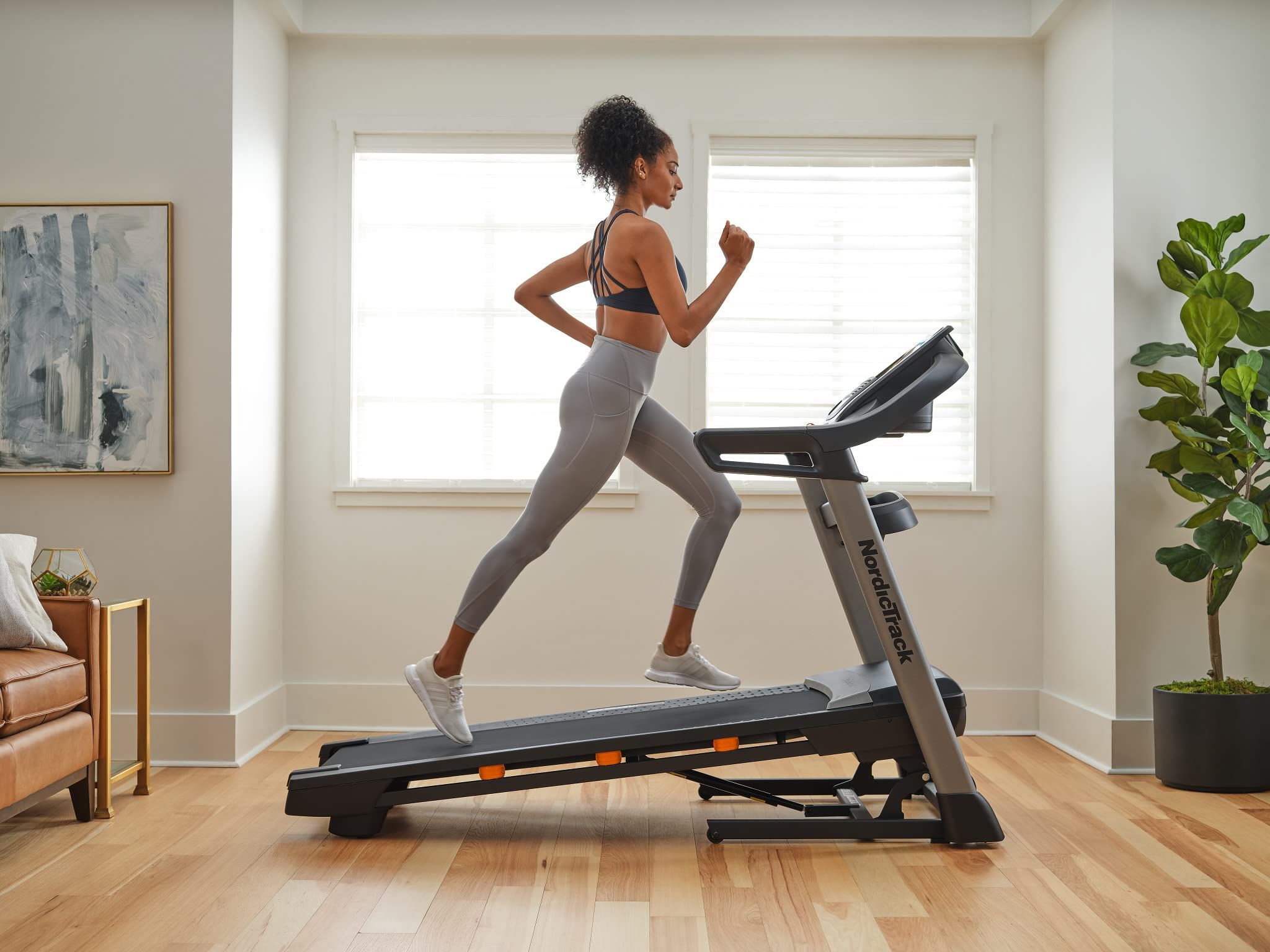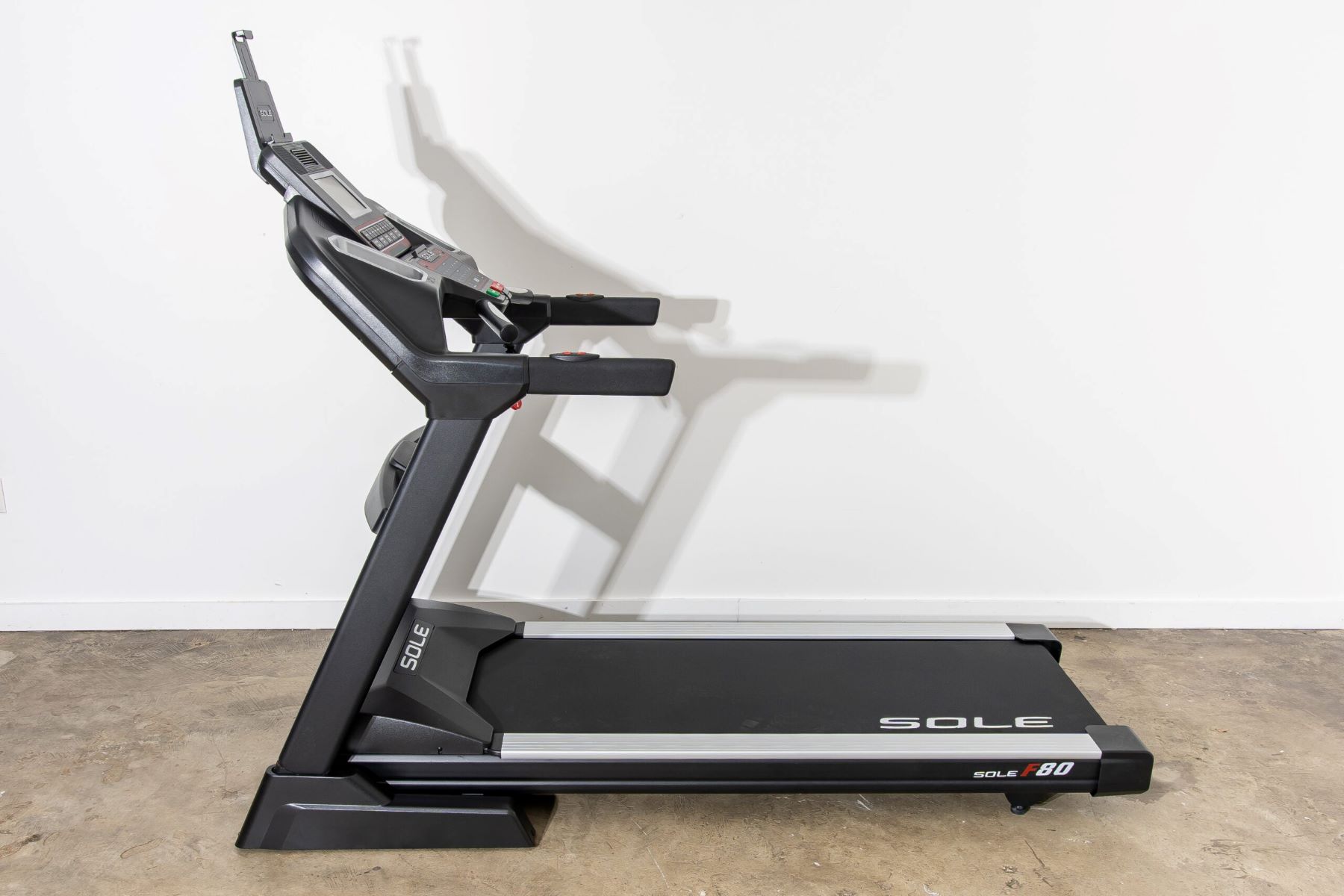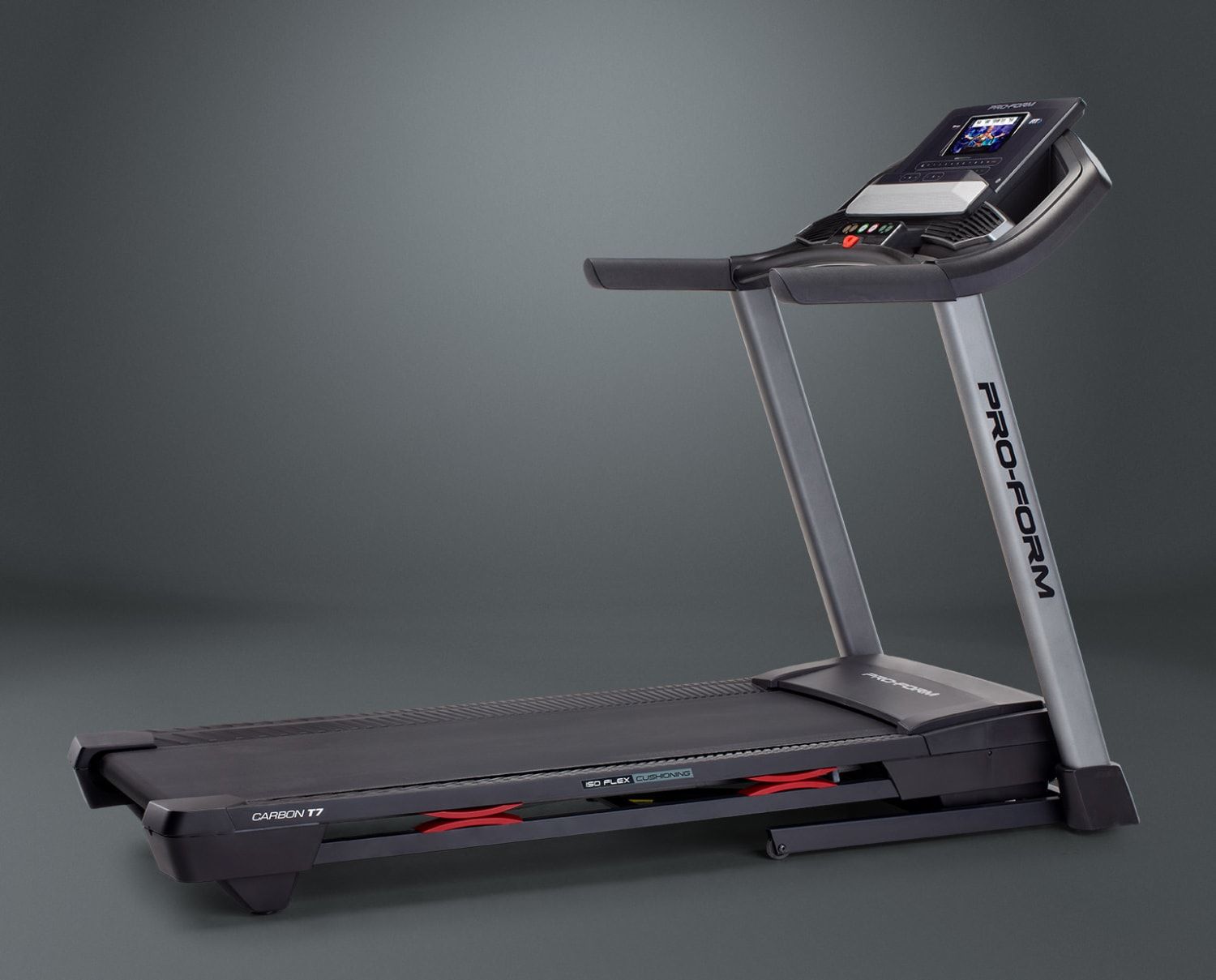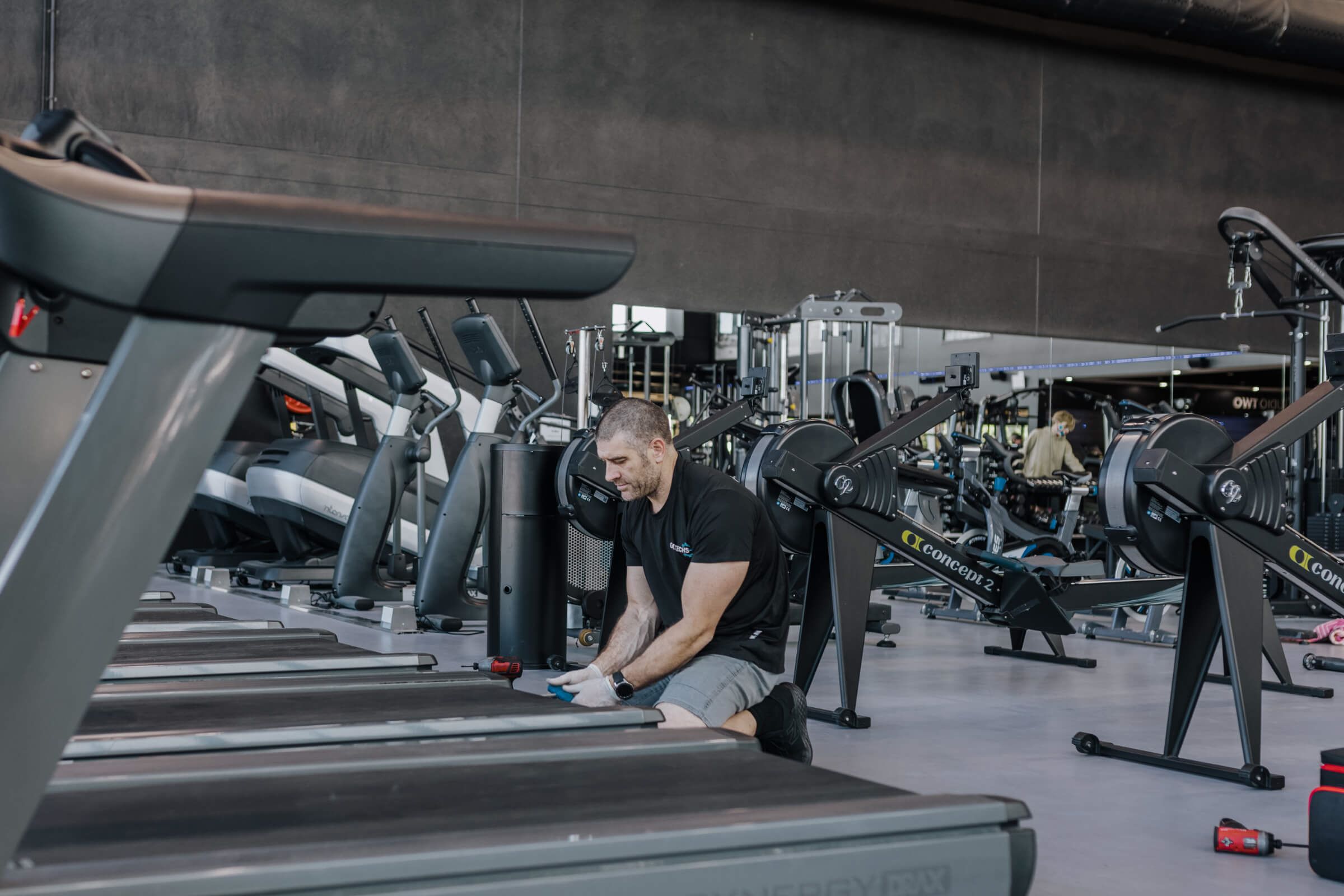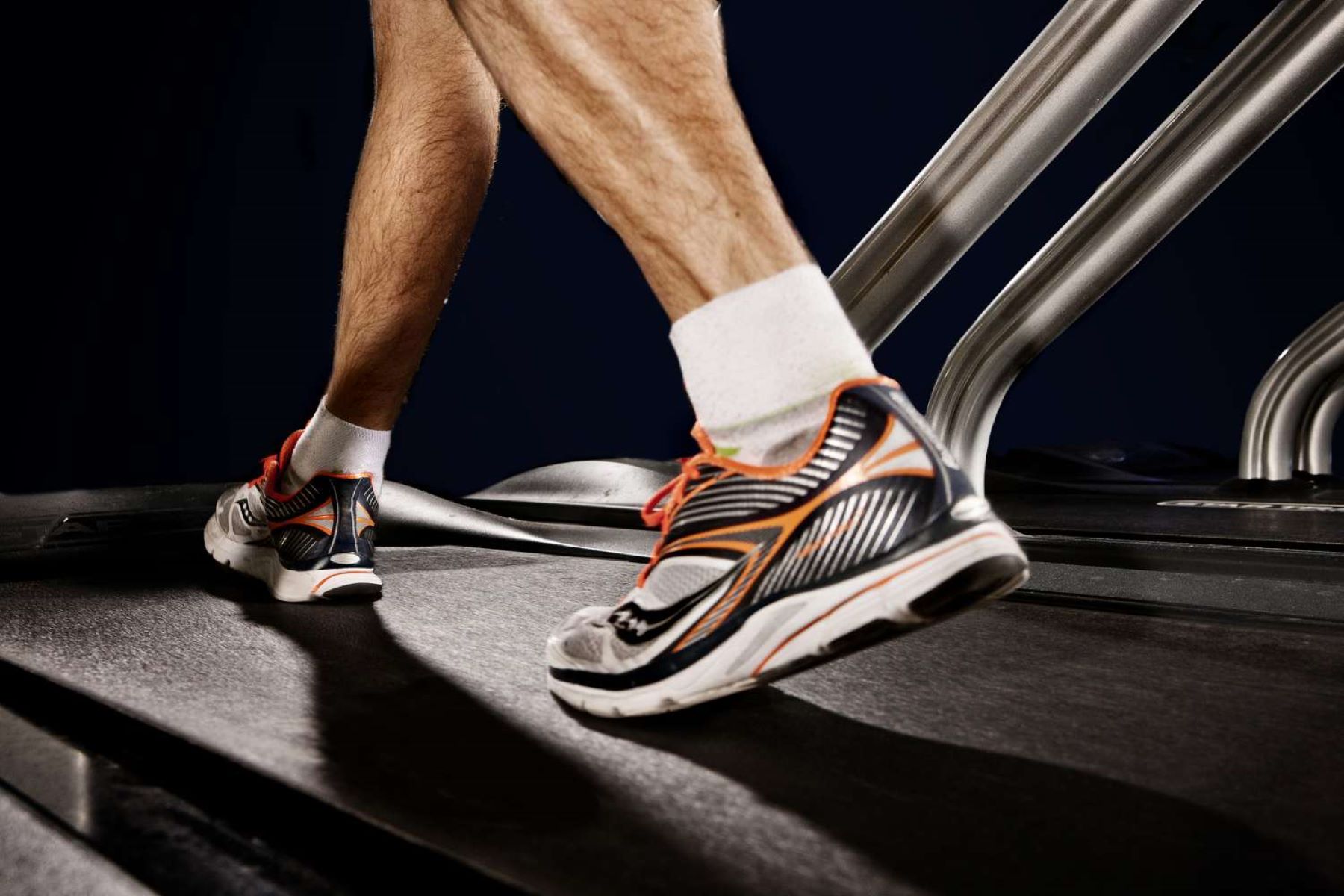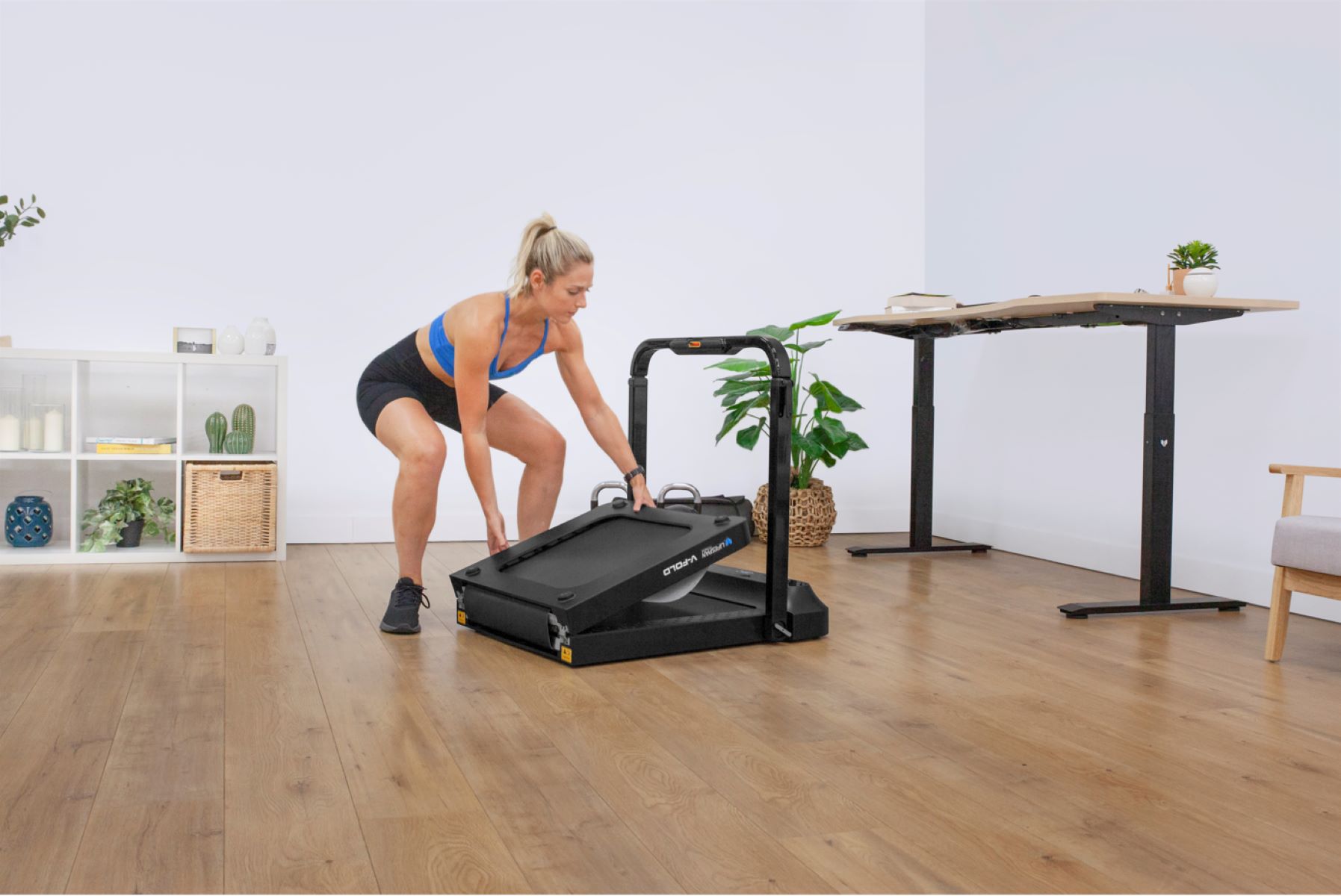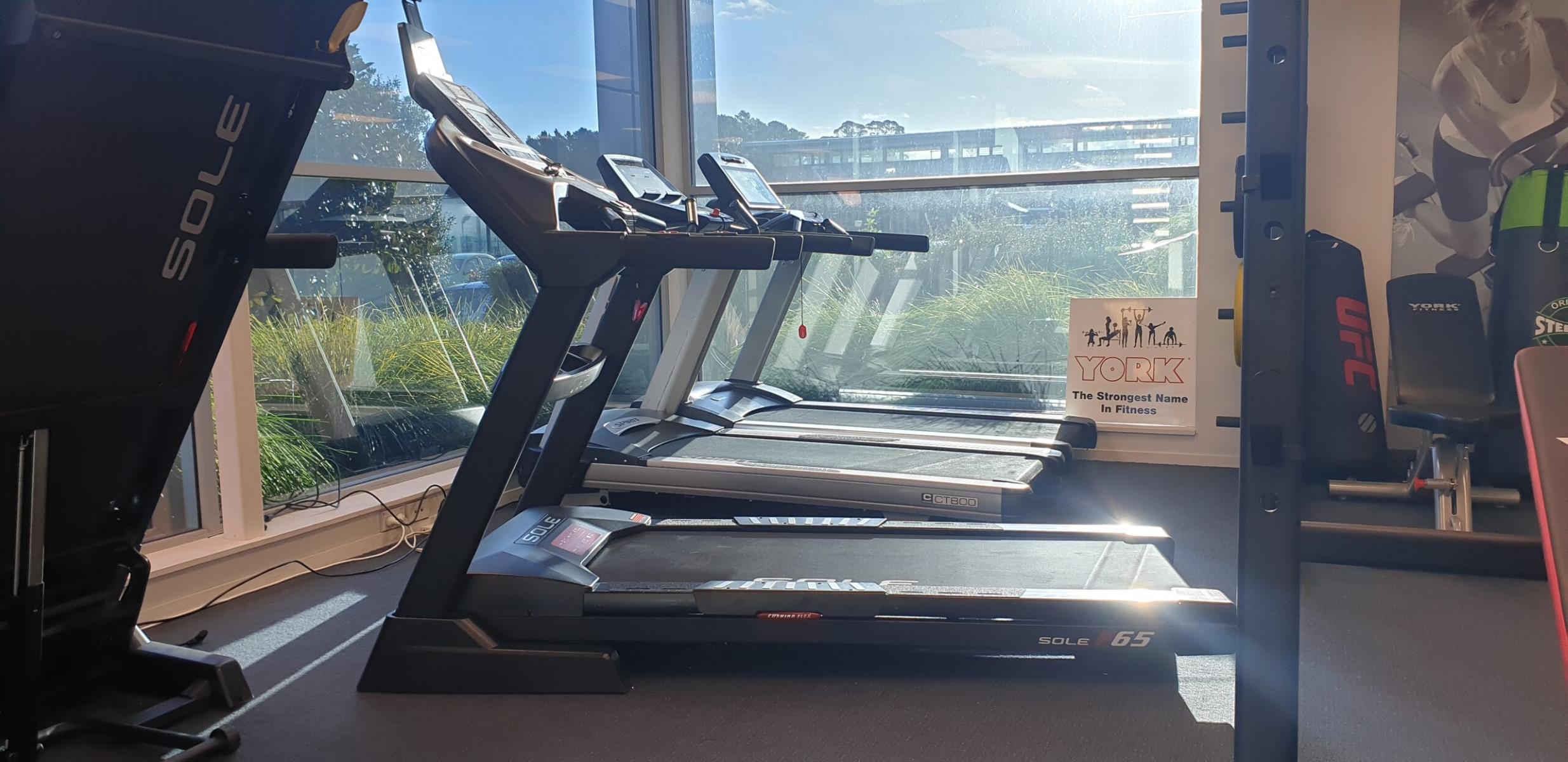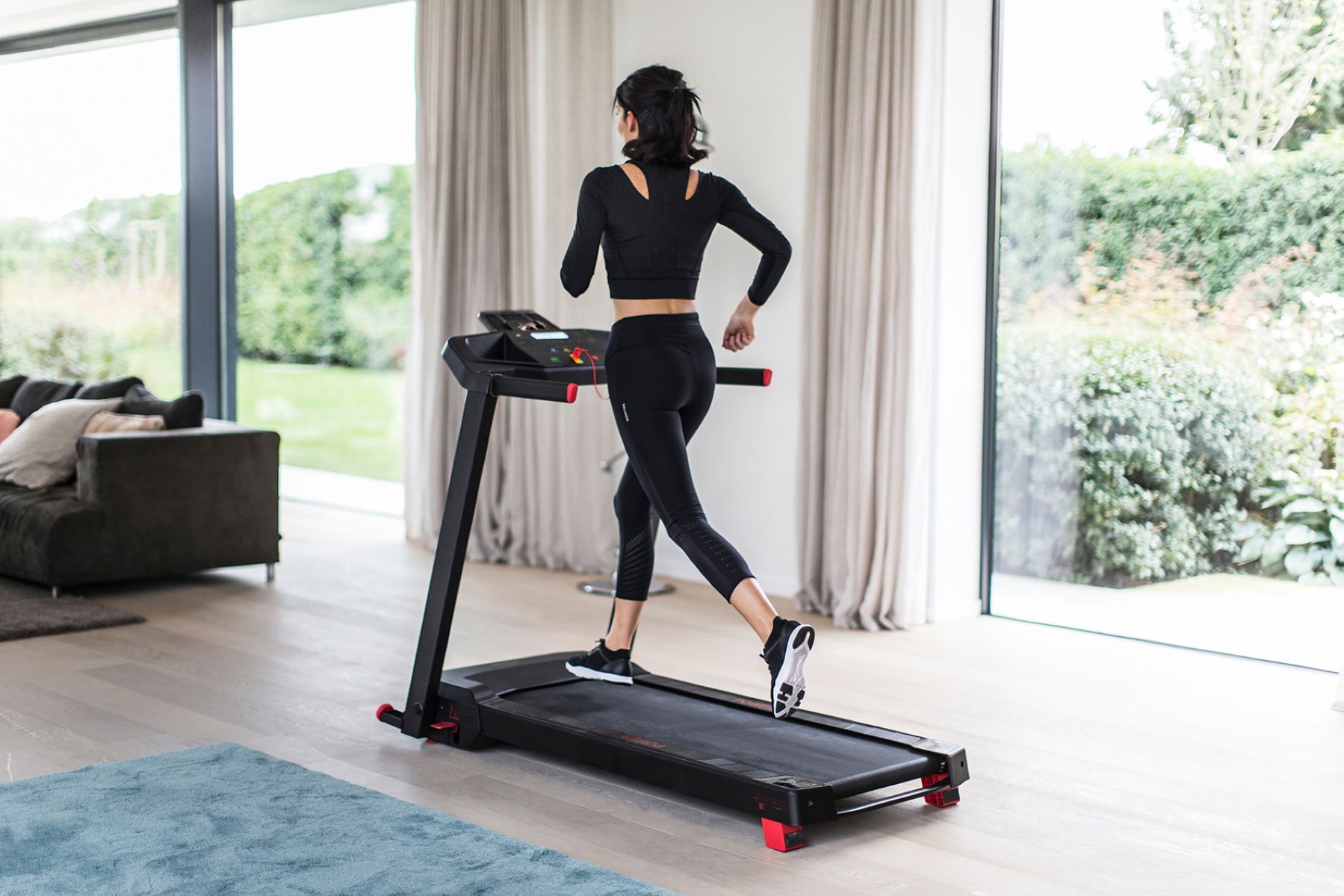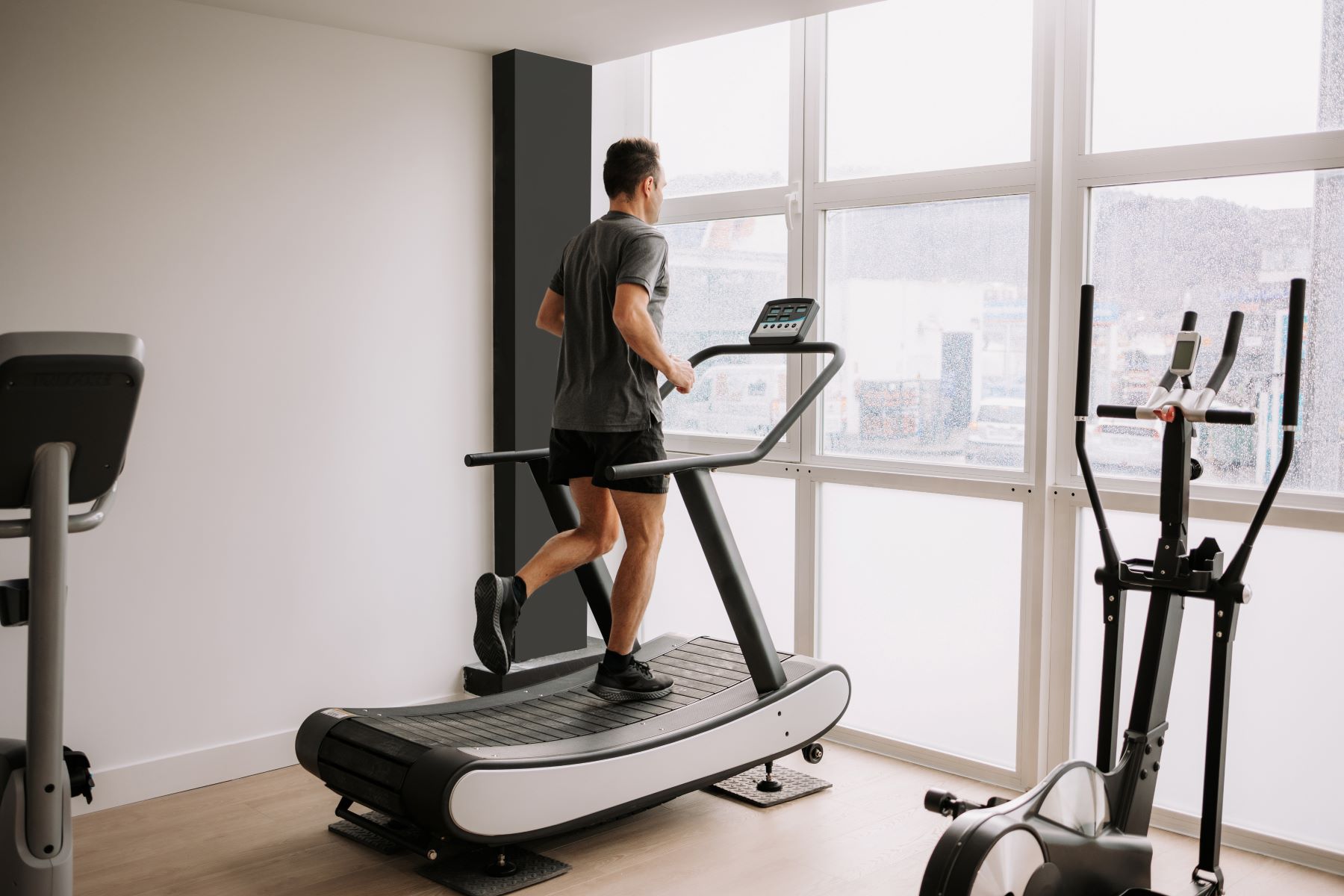

Featured
How Does A Manual Treadmill Work
Modified: January 22, 2024
Discover the inner workings of a manual treadmill and get the lowdown on its featured components. Enhance your fitness journey with this informative guide.
Introduction
Welcome to the world of fitness! Whether you are a seasoned gym-goer or a newcomer to the fitness realm, you’ve probably encountered the ubiquitous treadmill. Perhaps you’ve even come across the term “manual treadmill” and wondered how it differs from its motorized counterpart. In this article, we will take a closer look at how a manual treadmill works, its components, and the benefits it offers.
A manual treadmill is a simple yet effective piece of exercise equipment that allows you to walk, jog, or run indoors without the need for electricity. Unlike motorized treadmills that power the movement of the belt themselves, a manual treadmill relies on your own effort to get it moving and keep up the pace.
Now, you might be wondering why anyone would choose a manual treadmill when motorized options are readily available. Well, there are several reasons. First and foremost, manual treadmills are often more affordable compared to their motorized counterparts, making them an attractive option for those on a budget or looking to save money.
Furthermore, manual treadmills offer a unique and challenging workout experience. Since you are the one propelling the belt forward, you are essentially powering your own workout. This means that you have more control over the intensity of your workout and can adjust the speed and incline according to your fitness level and goals.
In addition to the physical benefits, manual treadmills are also more environmentally friendly as they don’t require electricity to operate. This makes them a greener option for those conscious of their carbon footprint.
So, how does a manual treadmill work? Let’s dive into the components that make up this fitness equipment and explore the mechanics behind its function. From the belt and deck mechanism to the flywheel system and resistance options, we will unravel the inner workings of a manual treadmill and understand why it can be a valuable addition to your fitness routine.
Overview of a Manual Treadmill
Before we dive into the technical aspects of how a manual treadmill works, let’s first understand the overall structure and design of this fitness equipment.
A manual treadmill consists of several key components that work together to provide you with an effective and engaging workout experience. These components include the belt and deck mechanism, the flywheel system, the resistance and incline options, and the monitor and display.
The belt and deck mechanism is the heart of a manual treadmill. It comprises a wide, flat belt that you walk or run on, and a sturdy deck that supports the belt and absorbs the impact of each step. The belt is typically made of durable materials such as rubber or PVC, allowing it to withstand the constant motion and pressure.
The flywheel system is another essential component of a manual treadmill. It is responsible for providing resistance and regulating the speed and smoothness of your workout. The flywheel is usually located at the front or back of the treadmill and is connected to the belt. As you move your feet, the flywheel rotates, creating resistance that mimics the experience of walking or running outdoors.
Unlike motorized treadmills that offer preset speed options, manual treadmills require you to use your own power to set the pace. This means that the speed of the belt is entirely controlled by your walking or running speed. You can choose to walk at a leisurely pace or challenge yourself by running at a faster speed, depending on your fitness goals and preferences.
Manual treadmills also often feature an adjustable incline mechanism. This allows you to simulate walking or running uphill, adding an extra level of intensity to your workout. By adjusting the incline, you can target different muscle groups and increase the calorie burn during your exercise session.
To keep track of your progress and monitor your workout statistics, manual treadmills are equipped with a monitor and display. The monitor can provide essential information such as distance, speed, time, and calories burned, allowing you to track your performance and make informed decisions about your fitness routine.
Overall, a manual treadmill offers a straightforward and intuitive exercise experience. By combining your own strength and effort with the mechanics of the treadmill, you can achieve a challenging and effective workout that suits your fitness level and goals.
Components of a Manual Treadmill
A manual treadmill is made up of various components that work together to provide you with a smooth and efficient workout. Understanding the different parts of a manual treadmill will give you a deeper insight into how it operates and how to use it effectively.
1. Belt and Deck: The belt and deck are the main components of a manual treadmill. The belt is the surface on which you walk or run, while the deck provides support and cushioning. The belt is made of a durable material that can withstand regular use and friction. The deck is designed to absorb shock and reduce impact, making your workout more comfortable and reducing the strain on your joints.
2. Flywheel: The flywheel is responsible for creating resistance and maintaining a smooth motion. It is typically located at the front or back of the treadmill and connected to the belt. As you move, the flywheel rotates, providing resistance that simulates outdoor walking or running. The size and weight of the flywheel can vary, with heavier flywheels offering greater resistance and stability.
3. Resistance and Incline Options: Manual treadmills often come with adjustable resistance settings. This allows you to increase or decrease the level of difficulty during your workout. By adjusting the resistance, you can challenge yourself and target specific muscle groups. Additionally, some manual treadmills also offer incline options. Adjusting the incline allows you to simulate walking or running uphill, providing a more intense workout and engaging different muscles.
4. Monitor and Display: Many manual treadmills feature a monitor and display that provide essential workout information. The monitor typically shows statistics such as distance, time, speed, and calories burned. This allows you to track your progress and set specific goals for each workout session. Some treadmills may also have additional features such as heart rate monitors or pre-programmed workout routines.
5. Safety Features: Safety is a crucial aspect of any exercise equipment, and manual treadmills are no exception. Most manual treadmills come equipped with safety features such as handrails and emergency stop buttons. Handrails provide stability and support while exercising, especially during high-intensity workouts. The emergency stop button allows you to quickly halt the treadmill’s motion in case of any emergency or imbalance.
Understanding the components of a manual treadmill will help you make the most of your workout and ensure proper usage. By familiarizing yourself with these components, you will be able to optimize your exercise routine, monitor your progress effectively, and stay safe during your workouts.
Belt and Deck Mechanism
The belt and deck mechanism is one of the fundamental components of a manual treadmill. It is responsible for providing a stable and durable surface for walking or running, ensuring a smooth and comfortable workout experience.
The belt, also known as the running surface or tread, is typically made of a durable material such as rubber or PVC. It is specifically designed to withstand the constant impact and friction generated by your feet as you walk or run. The belt’s width and length vary depending on the model of the treadmill, but they are generally wide enough to accommodate a natural stride.
The deck, on the other hand, is the solid platform on which the belt rests. It provides support and stability while absorbing the shock and impact from each footfall. The deck is often constructed from high-quality materials that can withstand regular use and maintain their structural integrity over time.
To ensure a smooth and seamless motion, the belt and deck mechanism incorporates a system of rollers or pulleys. These rollers are typically located at the front and rear of the treadmill and guide the movement of the belt as you walk or run. They help reduce friction and ensure that the belt moves freely and with minimal resistance.
An essential consideration when using a manual treadmill with a belt and deck mechanism is proper maintenance. Regular lubrication of the belt is necessary to minimize friction and ensure smooth operation. This can be done by applying a specific treadmill lubricant, following the manufacturer’s instructions. Additionally, it is crucial to keep the deck clean and free from debris to prevent any interference with the belt’s movement.
Some manual treadmills may feature additional features and technologies to enhance the belt and deck mechanism. For example, certain models may have shock-absorbing or cushioning systems built into the deck to reduce impact and provide a more comfortable workout. These features are particularly beneficial for individuals with joint issues or those seeking a softer landing during their workouts.
The belt and deck mechanism plays a vital role in providing a stable and reliable surface for your walking or running workout. It ensures that your movements are supported and comfortable while minimizing the impact on your joints. By properly maintaining the belt and deck, you can extend the lifespan of your manual treadmill and ensure optimal performance during every workout session.
Flywheel System
The flywheel system is a critical component of a manual treadmill that contributes to its smooth operation and resistance capabilities. It plays a vital role in providing you with a challenging and realistic walking or running experience.
The flywheel is typically located at the front or back of the treadmill, and it is connected to the belt. It consists of a heavy disk or wheel that stores and releases energy during your workout. As you move your feet, the flywheel rotates, creating resistance that mimics the experience of walking or running outdoors.
One of the primary functions of the flywheel is to regulate the speed and smoothness of your workout. When you start walking or running on a manual treadmill, the momentum generated by the flywheel keeps the belt moving even when you momentarily slow down or pause. This helps maintain a consistent pace and reduces any jarring or abrupt stops.
The size and weight of the flywheel can vary across different models and brands of manual treadmills. Heavier flywheels provide more resistance and stability, making your workout more challenging. On the other hand, lighter flywheels may provide a smoother and more comfortable exercise experience, particularly for individuals who are new to using a treadmill.
Some manual treadmills offer adjustable resistance options, allowing you to increase or decrease the difficulty of your workout. This is achieved by adjusting the position or tension of the flywheel. By increasing the resistance, you can make your workout more intense and engage different muscle groups. Decreasing the resistance, on the other hand, can help you ease into your workout or recover from a vigorous session.
The flywheel system in a manual treadmill does not require any external power source, making it an energy-efficient option. It relies solely on your own movement and effort to provide resistance and regulate the speed of the belt. This also means that you have complete control over the intensity of your workout, allowing you to tailor it to your specific fitness goals and preferences.
Overall, the flywheel system in a manual treadmill enhances your workout by simulating the resistance and momentum you would experience while walking or running outside. It ensures a consistent pace, offers adjustable resistance options, and allows you to have a challenging and effective exercise session.
Resistance and Incline
One of the key features that sets manual treadmills apart is their adjustable resistance and incline options. These features allow you to customize your workout, increase the intensity, and target different muscle groups.
Resistance is a crucial aspect of any exercise routine as it provides a challenge and helps build strength. Manual treadmills typically offer adjustable resistance settings that allow you to increase or decrease the difficulty of your workout. By increasing the resistance, you can make your workout more intense, requiring more effort and energy to maintain your pace. This can help improve cardiovascular fitness and build muscle endurance.
Adjusting the resistance on a manual treadmill is usually done by modifying the position or tension of the flywheel. Some treadmills may have simple resistance knobs or sliders that you can manually adjust, while others may utilize a lever or dial system. Experimenting with different resistance levels can help you find the right balance that suits your fitness level and goals.
In addition to resistance, manual treadmills often offer incline options, allowing you to simulate walking or running uphill. Changing the incline activates different muscle groups and increases the intensity of your workout. By inclining the treadmill, your body must work harder against gravity, resulting in a more challenging and calorie-burning workout.
The incline on a manual treadmill can usually be adjusted manually using a lever or a pin system. Some treadmills may offer preset incline levels, while others may provide a continuous incline adjustment, allowing you to fine-tune the slope to your preference. Incorporating incline variations into your routine can help enhance your cardiovascular endurance, strengthen your leg muscles, and add variety to your workouts.
It’s important to note that when adjusting the resistance or incline on a manual treadmill, it may require slight adjustments to your walking or running technique. For instance, when increasing the resistance, you may need to shorten your stride and increase your pace to maintain the same level of effort. Similarly, when inclining the treadmill, you may need to lean forward slightly to mimic the natural body position when walking or running uphill.
By utilizing the resistance and incline options on a manual treadmill, you can customize your workout to suit your fitness goals and preferences. Whether you’re aiming to build strength, improve cardiovascular endurance, or simply add variety to your routine, adjusting the resistance and incline can help you achieve your desired outcomes.
Monitor and Display
A manual treadmill is not just a piece of equipment for walking or running; it also comes equipped with a monitor or display that provides valuable information about your workout. This feature allows you to track your progress, monitor your performance, and stay motivated throughout your exercise session.
The monitor or display on a manual treadmill typically shows essential workout statistics such as distance, time, speed, and calories burned. These measurements help you gauge your progress and set specific goals for each workout session. By monitoring these metrics, you can easily keep track of your performance and make adjustments to your routine as needed.
In addition to basic workout information, some manual treadmills may have more advanced features on their monitor or display. For instance, they may include a heart rate monitor that allows you to track your heart rate during your workout. This is particularly useful for individuals who want to stay within their target heart rate zone for optimal cardiovascular benefits.
In recent years, many manual treadmills have incorporated more advanced technologies into their monitors or displays. This includes features such as Bluetooth connectivity, which allows you to sync your treadmill with fitness tracking apps or devices. This integration enables you to keep a comprehensive record of your workouts, set new goals, and even compete with friends or other users.
Some manual treadmills may also provide pre-programmed workout routines or interval training options on their displays. These programs offer variety and structure to your workouts, helping you stay engaged and motivated. They may include options for different intensity levels, time intervals, or specific training goals.
It’s important to note that the monitor or display on a manual treadmill should be positioned in a way that is convenient and easy to view during your workout. This ensures that you can monitor your progress without straining your neck or losing focus on your form.
Overall, the monitor and display on a manual treadmill serve as valuable tools for tracking your workout progress, helping you set goals, and providing motivation. By utilizing the information displayed, you can make informed decisions about your routine, measure your achievements, and maximize the effectiveness of your workouts.
Safety Features
When using any exercise equipment, safety should always be a top priority. Manual treadmills are designed with several safety features to ensure a secure and injury-free workout experience. These features are essential for protecting users, especially during intense or high-speed workouts.
One of the primary safety features found on manual treadmills is the presence of handrails. Handrails provide stability and support while walking or running, especially during high-intensity workouts. They offer an additional point of contact, allowing you to stay balanced and prevent potential falls or accidents. It’s crucial to use the handrails appropriately, particularly when adjusting speed or incline settings.
Another safety feature commonly found on manual treadmills is an emergency stop button or safety key. This button or key allows you to quickly halt the treadmill’s motion in case of any emergency or imbalance. It is usually located within easy reach and should be used if you lose control or experience any discomfort during your workout. Familiarize yourself with the location and function of this safety feature before starting your exercise session.
Some manual treadmills may incorporate additional safety elements, such as a tether cord or safety clip. This cord is attached to your clothing and connected to the treadmill’s console. If you accidentally stumble or lose your balance, the cord will detach from the console, triggering an immediate stop to the treadmill’s motion. This safety feature is particularly important for individuals who engage in more intense workouts or have concerns about their stability.
Proper usage and adherence to safety guidelines are essential to prevent injuries while using a manual treadmill. It’s important to start with slow and controlled movements, gradually increasing your intensity and speed as you become more comfortable. Maintain proper form and posture while walking or running, ensuring that your stride is natural and balanced.
Before using a manual treadmill, always read the manufacturer’s instructions and guidelines thoroughly. Familiarize yourself with the specific safety features of your treadmill and understand how to use them effectively. Regularly inspect your treadmill for any signs of wear or damage, and ensure that it is positioned on a stable and level surface to prevent any instability during your workouts.
By following these safety precautions and utilizing the built-in safety features of a manual treadmill, you can enjoy a safe and injury-free workout experience. Remember to prioritize your well-being and listen to your body, making adjustments or taking breaks as necessary. Taking proactive steps to ensure safety will allow you to focus on achieving your fitness goals with confidence.
Benefits of Using a Manual Treadmill
Using a manual treadmill offers a range of benefits that can enhance your fitness journey and contribute to your overall well-being. Whether you’re a seasoned fitness enthusiast or new to exercise, incorporating a manual treadmill into your routine can provide unique advantages.
1. Cost-Effective: Manual treadmills are often more affordable compared to their motorized counterparts. They are a budget-friendly option for individuals looking to add cardio equipment to their home gym without breaking the bank.
2. Portability: Manual treadmills are generally lightweight and compact, making them easy to move and store. They are a great option for those with limited space or for individuals who need a portable workout solution, allowing you to exercise wherever and whenever you choose.
3. Customizable Workout: Manual treadmills offer a customizable workout experience. Since the belt’s speed is controlled by your own movement, you have complete control over the intensity level and can adjust it according to your fitness level and goals. You can also modify the incline and resistance settings to add variety and challenge to your workout routine.
4. Engages More Muscles: Walking or running on a manual treadmill engages more muscles compared to a motorized treadmill. With a manual treadmill, you are the force behind powering the belt, which means you are actively using your leg and core muscles to maintain your pace. This can result in greater calorie burn and improved muscle strength and endurance.
5. Energy Efficient: Manual treadmills do not require electricity to operate, making them more environmentally friendly and cost-effective over the long run. By using your own effort to power the treadmill, you can save on energy bills and reduce your carbon footprint.
6. Safety: Manual treadmills often come equipped with safety features such as handrails and emergency stop buttons, ensuring a safer workout experience. These features provide stability, support, and allow you to quickly stop the treadmill’s motion in case of any imbalance or emergency.
7. Versatility: Manual treadmills can be used by people of all fitness levels and ages. Whether you are a beginner looking to start a new fitness routine or a seasoned athlete seeking an additional workout option, a manual treadmill can be easily adjusted to match your individual needs.
8. Improved Cardiovascular Fitness: Regular use of a manual treadmill can enhance cardiovascular endurance by improving heart and lung function. The ability to adjust speed and resistance allows you to increase the intensity of your workout gradually, challenging your cardiovascular system and improving its efficiency over time.
Incorporating a manual treadmill into your fitness routine offers numerous benefits, including customizability, cost-effectiveness, muscle engagement, and safety. Whether you choose to use it for brisk walking, jogging, or high-intensity interval training, a manual treadmill can be a valuable tool in reaching your fitness goals.
Tips for Using a Manual Treadmill
Using a manual treadmill effectively requires proper technique and attention to detail. Follow these tips to ensure a safe and efficient workout experience:
1. Warm-up: Before starting your workout, spend a few minutes warming up your muscles with dynamic stretches or light cardio exercises. This helps improve circulation, increases flexibility, and prepares your body for the upcoming workout.
2. Correct Form: Maintain proper form while using a manual treadmill. Stand tall with your head up, shoulders back, and core engaged. Avoid slouching or leaning forward excessively, as this can put strain on your back and negatively impact your gait.
3. Begin Slowly: Start your workout at a comfortable pace and gradually increase your speed as you warm up. It’s important to listen to your body and avoid pushing yourself too hard, especially if you’re new to using a manual treadmill.
4. Use Your Arms: Engage your arms while walking or running on a manual treadmill. Swing them naturally, allowing them to help maintain balance and add momentum to your stride.
5. Adjust the Incline and Resistance: Experiment with the incline and resistance settings to add variety and challenge to your workouts. Start with lower levels and gradually increase as your fitness improves.
6. Take Breaks: If you start to feel fatigued or out of breath, take brief breaks as needed. Listen to your body and rest when necessary to prevent overexertion or injury.
7. Stay Hydrated: Drink water before, during, and after your workout to stay hydrated. It’s important to replenish fluids to maintain optimal performance and prevent dehydration.
8. Track Your Progress: Use the monitor or display on the manual treadmill to track your workout statistics. Monitoring your distance, time, and calories burned can help you set goals and track your progress over time.
9. Mix Up Your Workouts: Add variety to your treadmill workouts by incorporating different interval training techniques, such as alternating between periods of higher intensity and lower intensity. This helps challenge your cardiovascular system and keeps your workouts interesting.
10. Cool Down and Stretch: Once you’ve completed your workout, take a few minutes to cool down by walking at a slower pace. Follow it up with static stretching to help prevent muscle soreness and improve flexibility.
By following these tips, you can maximize the benefits of using a manual treadmill, reduce the risk of injury, and enjoy a more effective and enjoyable workout experience.
Conclusion
Manual treadmills offer a unique and rewarding fitness experience. They provide an affordable and convenient way to incorporate cardiovascular exercise into your routine, all without the need for electricity. By understanding the components and mechanics of a manual treadmill, you can make the most of your workouts and achieve your fitness goals.
The belt and deck mechanism, powered by your own movement, forms the foundation of a manual treadmill. This simple yet effective design allows for a smooth and comfortable walking or running surface. The flywheel system adds resistance and regulates the speed, while adjustable resistance and incline options offer versatility and the ability to customize your workouts.
Additionally, the monitor and display provide valuable workout information, allowing you to track your progress and make informed decisions about your fitness routine. Safety features, such as handrails and emergency stop buttons, offer peace of mind while you exercise.
Using a manual treadmill provides several benefits, from cost-effectiveness to engagement of multiple muscle groups. It offers a customizable workout experience and is suitable for users of all fitness levels. Additionally, manual treadmills are energy-efficient and environmentally friendly.
To make the most of your manual treadmill workouts, follow the provided tips and guidelines. Warm up, maintain proper form, gradually increase your pace, and stay hydrated. Use the monitor to track your progress and adjust the incline and resistance settings to challenge yourself and add variety.
Remember, using a manual treadmill is not just about getting fit; it’s about embracing a healthy lifestyle. With dedication and consistency, a manual treadmill can be an excellent addition to your fitness routine, helping you achieve your fitness goals and maintain overall well-being.
So, lace up your sneakers, step onto the manual treadmill, and unleash your potential for a fulfilling and effective workout experience!
